1.
Introduction
In this paper, we mainly focus on the following stream-population model[1]
with the initial data
Here, u(x,t), v(x,t) are the population densities of neuston and benthon respectively; σ represents the per capita drift rate at which the species returns to the benthic population; μ is the per capita rate at which individuals in the benthic population enter the drift; α is the speed of the flow; d, ϵ are the diffusion coefficients of species u, v respectively; the reaction term f(v) is a strictly convex function of second order differentiable satisfying f(0)=f(1)=0, f′(0)>0>f′(1), and f(v)>0 for v∈(0,1). σ,μ,α,d,ϵ are positive constants and possess the biological meaning[2,3]. It is worth mentioning that the benthon basically do not move horizontally since ϵ≪1. Obviously, (0,0) and (μσ,1) are the equilibria and further we can obtain that (0,0) is unstable and (μσ,1) is stable for the corresponding spatially homogeneous system of (1.1).
In this paper, we are interested in the nonnegative traveling wave, connecting (0,0) and (μσ,1), which possesses the wave profile as
where the wave speed c≥0. Substituting (1.3) into (1.1), yields the new wave profile as
with the boundary value condition
It is worth pointing out that the existence of the traveling wave solution of (1.4) was proved, and the determinacy of linear and nonlinear selection of the minimal wave speed was further established by employing the method of upper and lower solutions in [1].
On this basis of the existence, we shall investigate the local and the global stability of the monotone traveling waves. In this progress, we need to conform that the solution of (1.1) is infinitely close to (¯U,¯V)(x−ct) when t is large enough for given initial data u0(x) and v0(x). To begin with, we set
and then (1.4) can be transformed into the partial differential model
subject to
From the above system (1.7) we know that (¯U,¯V)(z) is also its steady state.
The investigation of the stabilities of traveling wave solutions could be traced back to the original works [4,5]. Then many works assessing stability are available, but differences among them are frequent. For examples, the stability of the traveling waves with critical speed [6] and noncritical speed [7] in appropriate weighted Banach spaces is proved. The global stability of the forced waves [8,9] is presented. The time-periodic traveling waves are asymptotically stable [10,11]. Mei et. al. [12,13,14] proved the exponential stability of traveling wave fronts, and the exponential stability of stochastic systems is demonstrated [15,16]. By analyzing the location of the spectrum, the local stability of the traveling waves are investigated [17,18]. For more related works, we refer to [19,20,21,22,23,24,25,26,27,28,29,30,31,32], and the references cited therein.
Despite the success in the study of the existence and the speed determinacy of traveling waves to the model (1.1), the local and global stability of the traveling waves in the monostable still remains unsolved. In this paper, mainly inspired by the ideas in [18], we devote our attention to finishing the issue of stability for the steady state (¯U,¯V)(z). Firstly, the local stability is discussed on the basis of asymptotic behavior of the traveling waves near the equilibrium and the method of spectrum analysis. When analyzing the eigenvalue problem, we need to overcome the great challenge brought by the high-order nonlinear terms. Then by using the result of local stability, we should choose appropriate weighted Banach space. Furthermore, also by constructing upper and lower solutions, we prove that the solution (U,V) in the moving coordinates converges to the steady state. The new results on the global stability is established in the special weighted function space by using the squeeze theorem.
This paper are organized as follows. In section 2, we present some preliminaries and main results. In section 3, we prove the local stability of the traveling waves. The global stability of the steady state (¯U,¯V)(z) in a special choice on the weighted function space L∞ω(R) is investigated in section 4.
2.
Preliminaries and main results
First, linearizing the system (1.4) at (0,0) we obtain
The transformation
with λ>0 and ξi(i=1,2) being positive constants, allows us to transform the discussion of the asymptotic behaviors at infinitely in variable z to the following eigenvalue problem
where ξ=(ξ1,ξ2)T. Letting
then the eigenvalue problem (2.3) is equivalent to r(λ)ξ=A(λ)ξ. Further, we can obtain the eigenvalues
As we know, the principal eigenvalue is greater than or equal to the real part of matrix eigenvalues. According to [33], the principal eigenvalue of matrix A(λ) is
where r+ is real number and for any λ∈(0,+∞),
Actually, through the classified discussion of the positive and negative of A1and A2, r+(λ)>0 holds true.
Lemma 2.1. ([1], see Section 2) r(λ), defined in (2.7), is a real, continuous, and convex function with respect to λ∈R. Assume that
where c0 is called the minimal wave speed, then we can obtain that the equation cλ=r(λ) has
● no solution, if c<c0;
● a unique solution λ(c0), if c=c0;
● two solutions λ1(c) and λ2(c) with λ1(c)<λ2(c), if c>c0.
Based on the above analysis, we could give the asymptotic behaviors as z→∞ with the following lemma.
Lemma 2.2. ([1], see Section 2) The asymptotic behaviors of the traveling wave solution (¯U(z),¯V(z)) (see (2.1)) can be represented as follows:
with C1>0 or C1=0,C2>0, where the eigenvectors corresponding to eigenvalues λi(c)(i=1,2) are
The proof of the above lemmas can refer to the proof of Theorem 1 in [18], which will not be repeated here.
Before stating our main results, let us make the following notation.
Notation: Throughout the paper, Lp are function spaces defined by using a natural generalization of the p-norm for finite dimensional vector spaces. The weighted Lebesgue space Lpω with 1≤p<∞ can be expressed by
with the norm
where the weighted function
for some positive constants z0 and β.
With the introduction above, we state our main conclusions for two theorems.
Theorem 1. (Local stability) For any c>c0, the wavefront (¯U,¯V)(z) is locally stable in the weighted function space Lpω if β∈(λ1,λ2) to be chosen.
Theorem 2. (Global stability) Assume that c>c0, λ1<β<λ2 and the initial data U(z,0)=U0(z) and V(z,0)=V0(z) satisfy
and
Then (1.7) with initial data admits a unique solution (U,V)(z,t) satisfying
Moreover, the inequalities
and
hold for some positive constants k and η.
3.
Proof of Theorem 1
The purpose in this section is to apply the weighted energy method and spectral analysis to prove the local stability of the traveling waves presented in Theorem 1.
First, we assume that
where δ≪1, χ is a parameter, and ψ1(z) and ψ2(z) are real functions. Substituting (U(z,t),V(z,t)) into system (1.7), and linearizing the new system with respect to (¯U,¯V)(z), we obtain the following spectral problem:
where
where the sign of the maximal real part to the spectrum of the operator L is related to the local stability of the traveling wave solution. To proceed, we set
where ϕ1 and ϕ2 are the functions in the space Lp, ω has been defined in (2.13) with λ1<β<λ2. Substitute (3.4) into (3.2) to obtain a new spectral problem as:
where Φ=(ϕ1,ϕ2)T, D is defined in (3.3) and
Since H(z) and J(z) are bounded real matrix functions and ω, ω′, ω″ exist as z→±∞, we define
Further, we analyze the position of the essential spectrum for the operator Lω and give the following lemma.
Lemma 3.1. ([34], see Theorem A.2) If we define
then the essential spectrum of Lω is contained in the union of the regions inside or on the curves S+ and S−, which are on the left-half complex plane, when the condition λ1<β<λ2 is satisfied.
Proof. We prove the lemma 3.1 for two cases with respect to z.
Case 1. When z→+∞ in (3.6), we have
Therefore, the equation det(−θ2D+iθH++J+−χI)=0 has two solutions, i.e.
with E=−dθ2+A1(β)−cβ, F=(c−α−2dβ)θ, G=−ϵθ2+A2(β)−cβ, K=(c−2ϵβ)θ, where A1 and A2 have been noted in (2.4). Assume that
By Euler's formula, we obtain the real parts of the eigenvalues χ1,2 as follows:
Obviously, Re(χ1)>Re(χ2). By a simple calculation, one can obtain that
since the formulas (2.7 and 2.8) and λ1<β<λ2 are satisfied for c>c0. That is to say S+=S+,1∪S+,2 is on the left-half complex plane.
Case 2. When z→−∞, it follows that
Similar to Case 1, solving the equation det(−θ2D+iθH−+J–χI)=0, we obtain
where M=−dθ2−σ, N=(c−α)θ, P=−ϵθ2−μ+f′(1), Q=cθ. Further, Euler's formulas allow us to obtain the maximal real part of χ3,4 as
because of M+P<0 and MP−σμ>0. It means that S−={χ3|−∞<θ<∞} ∪ {χ4|−∞<θ<∞} is also on the left-half complex plane.
By the above analysis, the essential spectrum of the operator Lω is on the left-half complex plane. □
If the sign of the real part of the principal eigenvalue in the point spectrum (3.2) is negative, the traveling wave solutions is locally stable. So, we need the following step to check the sign of the principal eigenvalue to ensure the result of local stability.
Finally, we judge the sign of the principal eigenvalue in the point spectrum to prove the local stability. We first discuss the asymptotic behavior of the system (1.4) as z→−∞. By linearizing the system (1.4) at (μσ,1), we have
Let
with λ>0 and ξ3, ξ4 being positive constants. Substituting (3.18) into (3.17), it follows that
where ξ=(ξ3,ξ4)T. Suppose that λi(i=3,4,5,6) are the eigenvalues to the left matrix of Eq (3.19). According to the Vieta's theorem, we know these four eigenvalues are two positive numbers and two negative numbers. Without loss of generality, we assume that λ3>λ4>0>λ5>λ6 for c>0. Then the wave profile has the following asymptotic behaviors:
with C3>0 or C3=0,C4>0.
To associate with (3.2), we consider the following system
where u(z,t)=(u1(z,t),u2(z,t))T and D, C, B are defined in (3.3). For a given solution semiflow Qt=u(z,t,ψ) of (3.21) with any given initial data ϕ∈Lp, we denote by eχtΨ the solution of (3.21). It is easy to see that Qt is compact and strongly positive. By the Krein-Rutman theorem (see, e.g., [35]), Qt has a simple principal eigenvalue χmax with a strongly positive eigenvector, and all other eigenvalues must satisfy eχtΨ<eχmaxtΨ.
Next, we shall discuss the eigenvalue χ for two cases as χ=0 and χ>0.
Case 1. When χ=0, it can be directly calculated that (−¯U′,−¯V′)(z) is the corresponding positive eigenvector derived form (3.2), where the asymptotic behavior of the solution of (2.1), i.e. (¯U,¯V)(z)∼(C1e−λ1z,C1e−λ1z), C1>0, as z→∞. Although it could be check that the positive eigenvector (−¯U′,−¯V′)(z) is not belong to the weighted space Lpω since λ1<β<λ2.
Case 2. In this case, we discuss the eigenvalue χ>0 to produce a contrary for two cases with respect to z, namely, z→−∞ and z→∞. Assume that χ>0 and Ψ∈Lpω. Then we know that the minimal positive eigenvalue of the Ψ is larger than β. Since ¯Ψ(z)=(−¯U′,−¯V′)(z) is a positive solution of (3.21), it follows that ¯Ψ(z)>Ψ as z→∞.
When z→−∞, assume that Ψ(z) has the asymptotic behavior as keλz for some positive k and λ. Substituting it into the spectral problem (3.5), we obtain the characteristic equation in eigenvalue χ as follows:
Next, we shall show the relationship between the four roots of (3.22) denoted by ˆλi(i=3,4,5,6) and λi(i=3,4,5,6), namely, ˆλ3>λ3, ˆλ4>λ4, ˆλ5<λ5, ˆλ6<λ6. In fact, when χ>0, the parabolic
have two roots r±p1 and r±p2 with one positive and one negative, respectively. It is easy to see that r−p1<r−p2 and r+p1<r+p2. Similar discussion to
we also obtain that r−p3<r−p4 and r+p3<r+p4. Further, we know that r−p1, r+p1, r−p3 and r+p3 are also the roots of
and r−p2, r+p2, r−p4 and r+p4 are the roots of
That is to say that the positive roots of p5 related to p6 are moving right. Therefore, when the curves of p5 and p6 intersects with the same line y=μσ, the points are denoted by ˆλi(i=3,4,5,6) and λi(i=3,4,5,6), respectively. And the points of intersection satisfy ˆλ3>λ3, ˆλ4>λ4, ˆλ5<λ5, ˆλ6<λ6. In other words, the positive roots of λ are increasing with respect to χ. This indicates that ¯Ψ(z)∼k1eλ3z and Ψ(z)∼k2eˆλ3z as z→−∞.
Thus, we choose ¯k sufficient large such that ¯k¯Ψ≥|Ψ|. By the comparison principal for the system (3.21), it must be ¯k¯Ψ(z)≥|Ψ|eχt. Hence the assumption χ>0 is incorrect. This implies that the real parts of all eigenvalues χ of (3.5) should not be positive for Ψ∈Lpω.
The proof is complete.
4.
Proof of Theorem 2
In this section, we will prove Theorem 2. In order to realize it, we need the following conclusion.
(Comparison principle) Let (U+,V+)(z,t) and (U−,V−)(z,t) be the solutions of (1.7) with respect to the initial values
respectively; namely
It holds that
By comparison principle, we have
If both (U+,V+)(z,t) and (U−,V−)(z,t) converge to (¯U,¯V)(z), then the squeezing theorem ensures the global stability of system (1.7) stated in (2.2).
Lemma 4.1. Under the conditions given in Theorem 2, (U+,V+)(z,t) converges to (¯U,¯V)(z).
Proof. To begin with, we suppose that
which satisfies the initial values
By (4.2) and (4.4), we have
Through (1.4) and (4.3), the following inequality
holds for the matrices C and D defined in (3.3), and
Then we consider the convergence of (R,S)(z,t) for two cases with respect to z.
Case 1. When z>z0, we first define
so as to investigate the stability in weighted function space L∞ω for all (z,t)∈R×R+, where ¯R and ¯S are the functions in L∞(R), the weighted function ω(z) is defined in (3.3). Substituting (4.10) into (4.8), we obtain
where A1(β) and A2(β) are defined in (2.4).
Further, we choose
for some positive constants k1 and η1, where (ζ1,ζ2)T=(ζ1(β),ζ2(β))T is the eigenvector of matrix M1. In fact,
which has the eigenvalue
The associated eigenvectors can be found by direct calculation as follows:
It is not hard to check that, for λ1<β<λ2, ζ1(β), ζ2(β) are positive and ¯λ1 is negative. Moreover, one can obtain
Thus, we can choose η1≤−¯λ1 such that
Once we choose k1≥maxz∈R{¯R(z,0)ζ1,¯S(z,0)ζ2} to make
then by comparison principle on unbounded domain, ∀(z,t)∈R×R+, we obtain
Therefore, the above inequality holds for any fixed point z0. That is to say, for z>z0, (R,S)(z,t) converges to (0,0).
Case 2. When z≤z0, the system marked (R,S)(z,t) can be shown as
Here, f(S+¯V)−f(¯V) is a second-order differentiable function that can be expressed as f′(1)S+h(S) (h(S) also is second-order differentiable and h(0)=0) as (¯U,¯V)(z)→(μσ,1). Consequently, we need to select z0, so that
for some given enough small positive ε1 and ε1≪μ−f′(1).
From the following autonomous system
with the initial data
we know that the solution (ˆR,ˆS)(t) of (4.20) is an upper solution of system (4.18).
Next, for the convergence of (R,S)(z,t), it is sufficient to prove that (ˆR,ˆS)(t) converges to (0,0) as t tends to ∞. A direct calculation shows that the eigenvalues ˆλ1 and ˆλ2 of the Jacobian matrix of system (4.20) at the fixed point (0,0) are less than zero. Therefore, (0,0) is a stable node. From the phase plane analysis, any manifold in ˆRˆS-space for any initial value (ˆR,ˆS)(0) in region [0,μσ]×[0,1] converges to the origin (0,0). Then, as t→∞, we define
with ˆk1>0 and (ˆC1,ˆC2)T is the eigenvector of the Jacobian matrix respect to ˆλ1. We can choose ˆk1 large enough and ˜λ1=min{η1,−ˆλ1} to be used that we have
at the boundary z=z0. As a result, by comparison on the domain (−∞,z0]×[0,∞), see Lemma 3.2 in [36], for all (z,t)∈(−∞,z0]×R+,
then (R,S)(z,t) converges to (0,0) for z∈(−∞,z0]. □
Lemma 4.2. Under the conditions given in Theorem 2.2, (U−,V−)(z,t) converges to (¯U,¯V)(z).
Proof. Let
to satisfy the initial values
Similar discussion as lemma 4.1, ∀(z,t)∈R×R+, we have
and
where the second-order matrices C and D are consistent with those in (3.3) and
Now we also consider the convergence for the following two cases with respect to z.
Case 1. (z>z0). By using the fact X<¯U and Y<¯V, we can verify that ∃η2>0 and k2≥eβ(z−z0)maxz∈R{X(z,0)ζ1,Y(z,0)ζ2} bring
for all (z,t)∈R×R+.
Case 2. (z≤z0). Define (ˆX,ˆY)(z,t) as the solution of the following autonomous system
with the initial data
Then (ˆX,ˆY) is an upper solution to the system
Phase plane analysis shows that for any initial values in region [0,μσ]×[0,1], (ˆX,ˆY)(t) always converges to (μσ,1). Similar to the proof of case 2 in Lemma 4.1, for some positive numbers ˆk2 and ˜λ2, we obtain
□
Now we will use the squeezing theorem to obtain the conclusion of the Theorem (2.2).
By the inequalities (4.4), for any (z,t)∈R×R+, it gives
From Lemmas 4.1 and 4.2 and the squeezing theorem, ∃k>0,η>0 so that ∀(z,t)∈R×R+,
To sum up, Theorem 2 is proved completely.
Author contributions
Y. Tang and C. Pan: Methodology; H. Wang and C. Pan: Validation; Y. Tang and C. Pan: Formal analysis; C. Pan: Writing-original draft preparation; Y. Tang and H. Wang: Writing-review and editing; C.Pan and H. Wang: Supervision; C. Pan: Project administration; C. Pan: Funding acquisition. All authors have read and agreed to the published version of the manuscript.
Acknowledgments
This work is supported by the National Natural Science Foundation of China grant (No.11801263).
Conflict of interest
The authors declare no conflict of interest.











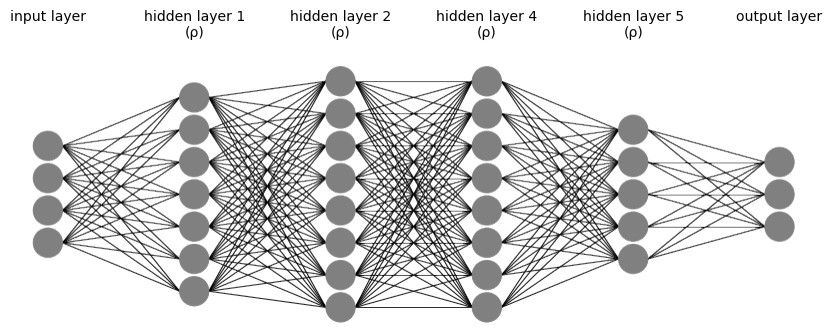
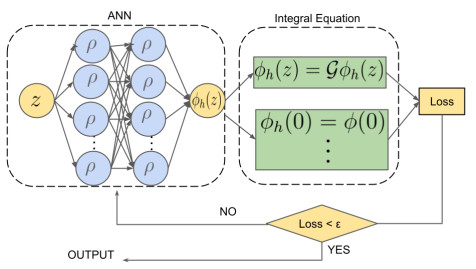
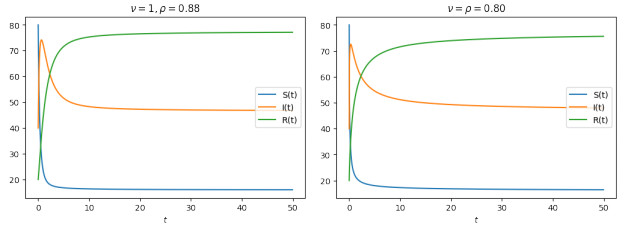
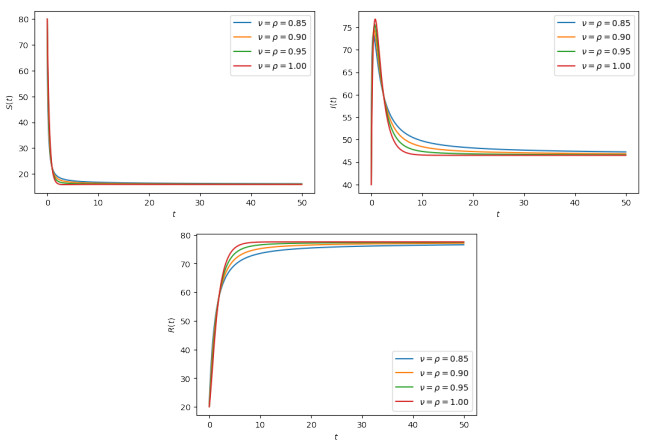
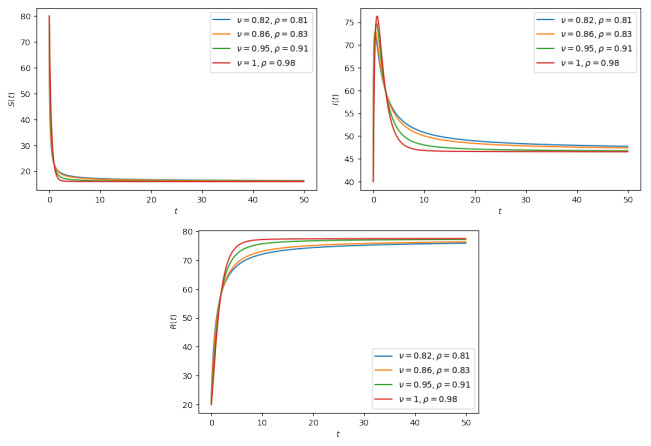
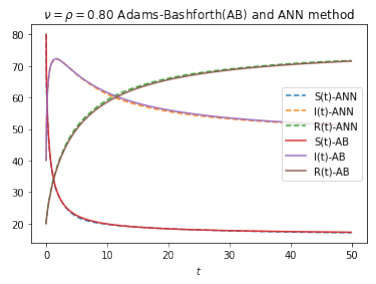


 DownLoad:
DownLoad: